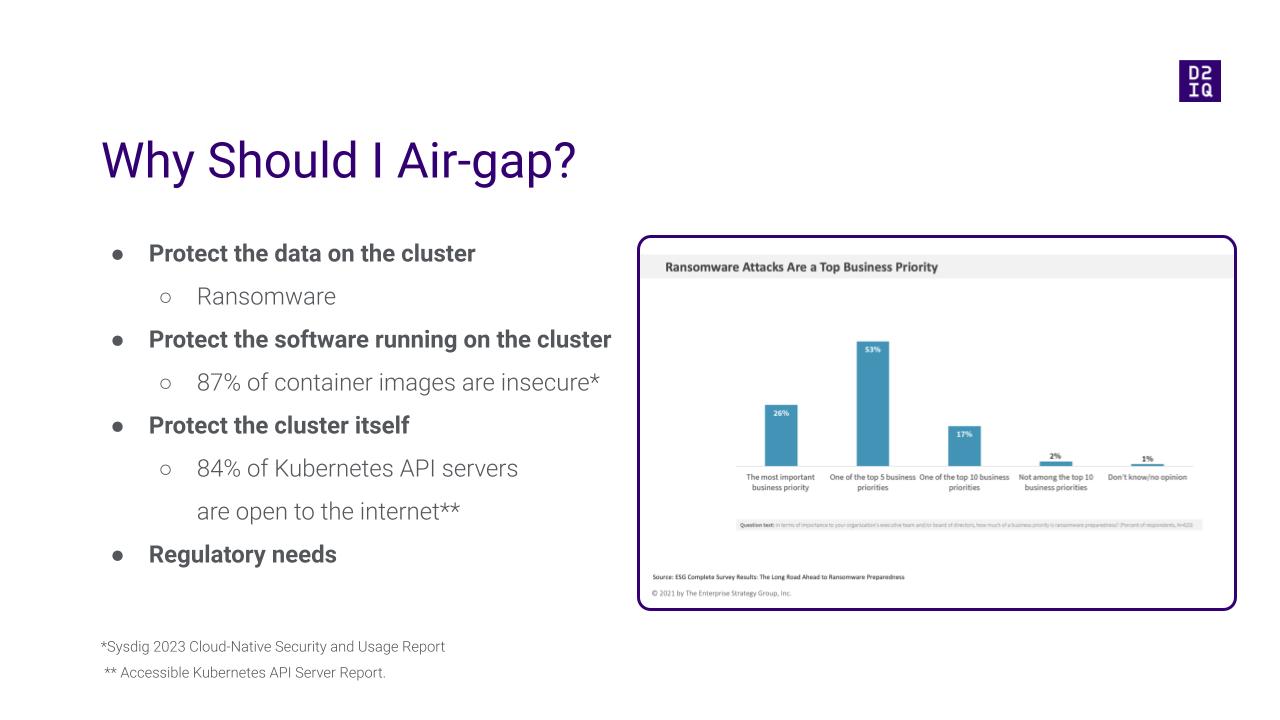Cyber security has become a top priority across all industry sectors, public and private. Securing a Kubernetes environment presents new challenges to organizations that are transitioning from traditional IT infrastructures to container management solutions in the cloud.
And as ESG principal analyst Paul Nashawaty notes, as cloud adoption accelerates, cloud sprawl, cluster sprawl, and the number of production applications running in the cloud have created a critical need to secure those applications.
Strengthen Security with Strategic Air-Gapping
The best way to minimize exposure to cyber attacks is to isolate data by deploying an air-gapped environment that has no connection to the Internet and limits human access.
Although highly effective, air-gapping is not a widespread practice and is used mainly to protect an organization’s most sensitive data.
However, with so many areas of vulnerability to protect and a range of air-gapping approaches available, organizations can apply air-gapped security measures in places that have not generally been considered candidates for air-gapped protection.
D2iQ Eases Air-Gapped Deployments
The D2iQ Kubernetes Platform (DKP) provides
full support for physically and logically air-gapped clusters, including the unique capability to perform an air-gapped deployment in minutes with just a few clicks. DKP also simplifies full air-gapped deployments via self-contained images and purpose-built automation. With many government programs requiring fully air-gapped deployments, DKP’s proven ease of installation in those use cases provides a distinct advantage.
To learn how D2iQ can help you gain Kubernetes agility that includes military-grade security and simplified air-gapped deployment,
speak with the experts at D2iQ.





